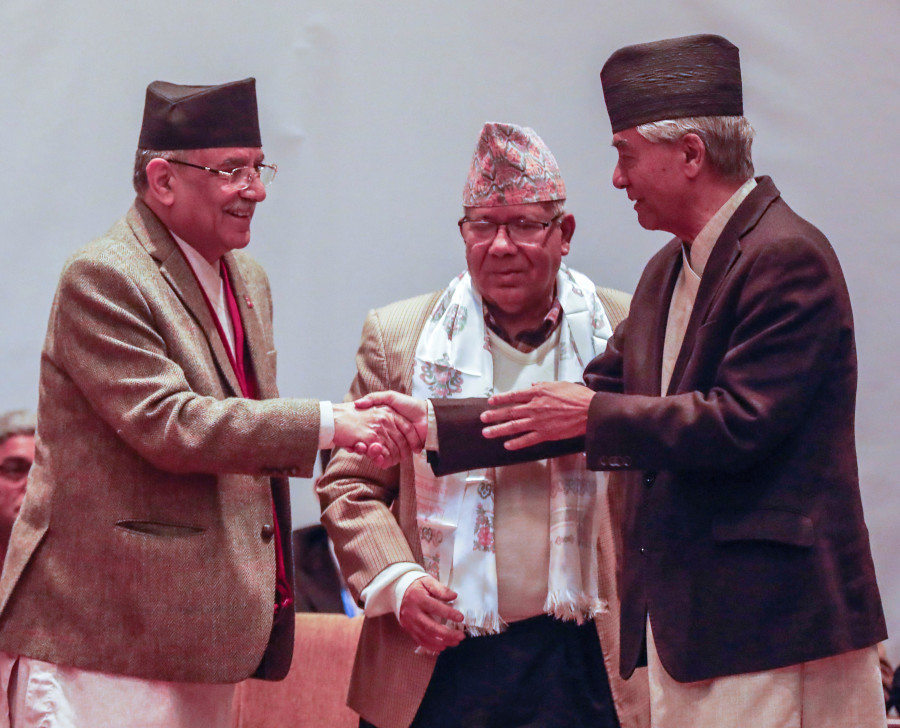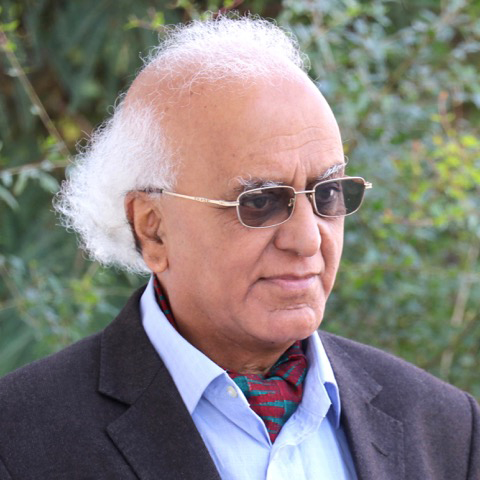Columns
Of political parties and leaders
The binary of democrats and communists is the most commonly used expression in Nepali political parlance.
Abhi Subedi
I would use the word calculation to characterise the politics of Nepal today. In a little different idiom current in recent times, we may even call it the algorithm of Nepali politics. Power sharing political parties of the ruling alliance work out the mathematics of occupying the ministerial posts commensurate with the number of seats they have won in Parliament. We wake up each day to stories of the quotas of ministerial posts for different parties making up the ruling alliance. The power of each party is calculated in terms of the leverage it will have on the vote of confidence for the government. The operation of a hung Parliament should be understood in a simple process. But the Nepali political parties have charged the mathematics with haste, short-sightedness, individual angst and the sense of insecurity of some prominent leaders made more complex by the visions of the nascent leaders.
From the academic point of view, the binary of democrats and communists is the most commonly used expression in Nepali political parlance. The binary of Congress and communists, however, appears to be slowly losing its monopoly with the emergence of smaller parties whose bargaining power in government formation has become a subject of common discussion in Nepali politics these days. It would be appropriate to evoke the theory of a French philosopher named Jacques Derrida who said the so-called fixed binaries “always already” get deconstructed. In Nepal, the old structural pattern is similarly getting deconstructed. The old Congress-communist binary is split into several factions. The Nepali Congress has a history of breaking and uniting. But the present Nepali Congress has clearly two factions within what is seen as a monolithic party structure. The party draws its strength from the democratic and socialist ideals of BP Koirala, the revolutionary spirit of Ganesh Man Singh and the Gandhian idealism of Krishna Prasad Bhattarai.
Important difference
One communist leader named Man Mohan Adhikari (1920-99) made some important difference albeit the period of his leadership in the communist government was short. I think it would be appropriate for me as an academic to recall a few stories related to him. It would be important today to dwell on this politician’s leadership of the Nepali government. Adhikari gave a bit of a surprise to the Western press when he became one of the few democratically elected communist party leaders to serve as head of government. He became prime minister representing the Communist Party of Nepal (Unified Marxist-Leninist) from 1994 to 1995. Adhikari visited Britain as prime minister in April 1995. He addressed a meeting at Lancaster House at that time. The British newspaper The Economist wittily wrote about Adhikari: A communist no longer remains a communist when he becomes the prime minister of Nepal. That was a clever news story made to characterise Adhikari's successful projection of his image as a free democratically elected prime minister. My British friends wrote to me at that time how they were surprised to find a Nepali prime minister maintaining the dignity and standard of a prime minister. But a question arises: Did Adhikari cease to be a communist after becoming the prime minister of Nepal? The answer is no, he did not. I want to add another story related to Man Mohan Adhikari becoming the first elected communist prime minister.
Prominent American Marxist literary critic, philosopher and political theorist Fredric Jameson (1934) made a detour to Kathmandu while he was on a lecture tour in India. He did so at the request of our Literary Association of Nepal, which is still active under the name LAN. As president of that association, I invited most of the prominent Nepali Marxist thinkers and writers to attend Jameson's lecture organised at the Campus of International Languages. As Jameson is a very complex theorist, several of the attendees could not appreciate his “Marxist discourse”. We arranged a meeting between Jameson and Man Mohan Adhikari. Jameson always wanted to see a communist become the prime minister of Nepal and form the government. When I asked Jameson what he thought about the meeting, he said he was very pleased by his conversation with Adhikari. Jameson hoped Adhikari would become the prime minister of Nepal. The failure of Indian communists to get enough seats in Parliament to form a government despite their long history and wide network of organisation was a subject of disappointment for Jameson. I don't know if Jameson has written any articles on the subject. That was a certain day in the month of November 1993. Jameson's prediction came true; Man Mohan Adhikari became the prime minister of Nepal in November 1994 exactly one year after that conversation.
Jamesonian satisfaction
When I told Man Mohan Adhikari about it at one chance meeting after his government had failed in 1995, he was very pleased. Adhikari asked me about Jameson; he also wanted me to remain in contact with him. I could not do so because as a free person and academic, I did not want to be seen as a member of his party though I had great respect for him whom I knew even as a school boy in Tehrathum because of my brothers' political associations. The leaders of the communist parties of India were very pleased after Adhikari became the first communist prime minister of Nepal. One could understand the anxiety of Jameson and the Indian communist parties who chose electoral politics as their modus operandi. EMS Namboodiripad, Indian communist politician and theorist, met Adhikari at a very old age during his Delhi visit as prime minister in April 1995 to express what I would term as the Jamesonian satisfaction.
These short episodes that I have presented here by alluding to the events of Man Mohan Adhikari's life help to see the position of the erstwhile two parties Nepali Congress and Nepali communists. Pushpa Kamal Dahal, alias Prachanda, leader of the CPN (Maoist Centre) does not represent the communist force of the binary, neither does KP Oli, leader of the second largest party in Parliament the CPN (United Marxist-Leninist). The disgruntled factions of the communist Maoists and the UML do not represent a single force in the binary either. Similarly, Nepali Congress president Sher Bahadur Deuba does not appear to represent a unified Nepali Congress, the other force in the binary. Deuba is overtly dealing with a strong faction of his comrades in opposition within the party. Prachanda and his comrades call themselves “Maoist” that, in linguistic terms, has now become a mere tautology. Baburam Bhattarai was the first to recognise that.
But the Nepali Congress and the communist parties still represent what theorist and writer Walter Benjamin would call a “Messianic” time in Nepali history. Let us hope they make the best use of that time before it is too late.




 10.12°C Kathmandu
10.12°C Kathmandu















